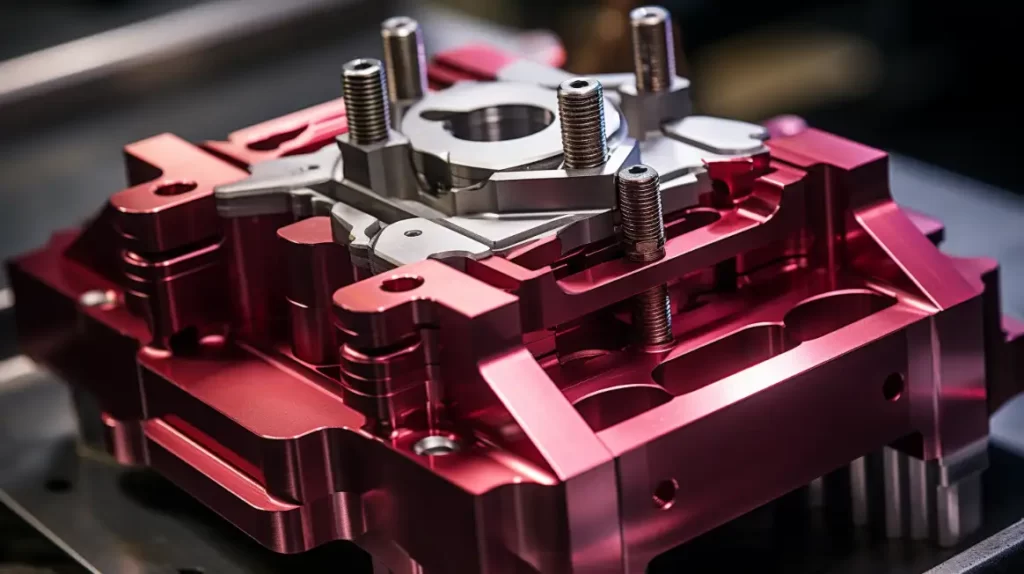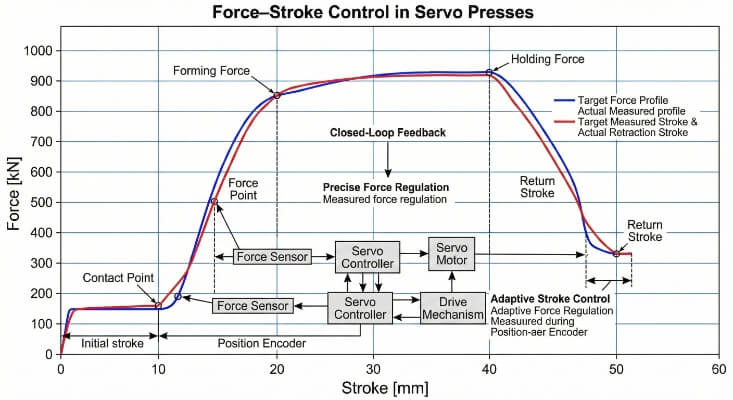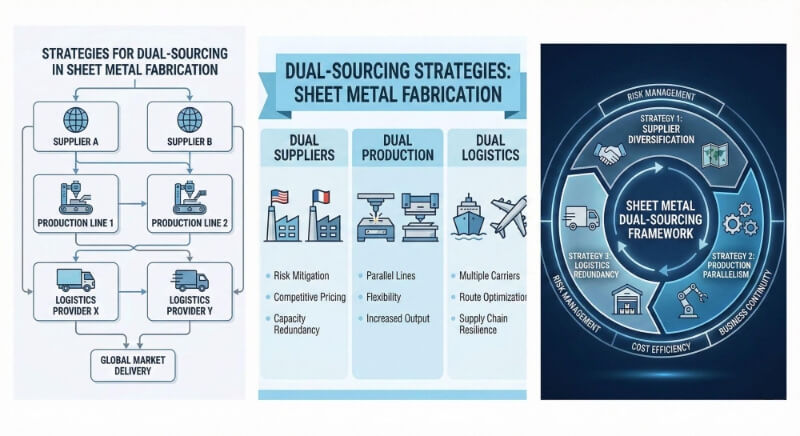Fine blanking is a precise metal forming process that combines stamping and machining to produce high-quality components. However, achieving optimal results can be challenging without the right techniques and knowledge. To excel in fine blanking, focus on material selection, tooling design, and process parameters.
Fine blanking offers unique advantages, but mastering it requires attention to detail. Explore the following tips and best practices to enhance your fine blanking projects.
What is Fine Blanking?
Fine blanking is a specialized metal forming process that combines the principles of stamping and shearing to produce high-precision parts. It utilizes a unique setup involving a punch, counterpunch, and a blank holder, allowing for minimal clearance and controlled material flow.
This results in components with exceptional edge quality, tight tolerances, and reduced need for secondary operations.
How Does Fine Blanking Work?
The fine blanking process begins with feeding a piece of metal into a blanking machine. Here’s a detailed breakdown of how fine blanking works:
- Material Placement: The metal sheet is fed into the fine blanking press, clamped between the die and a high-pressure holding pad.
- Pressure Application: The press applies force from both the top and bottom. This dual pressure ensures that the material remains flat and minimizes deformation during cutting.
- V-Ring Functionality: A V-ring, or impingement ring, surrounds the punch and compresses the material before the punch descends.
- Punch Descent: As the punch descends, it shears through the metal, creating the desired shape while simultaneously applying counter pressure from below to ensure a clean cut without burrs or fractures.
- Ejection of Finished Part: The forces are relaxed once the cutting action is complete, allowing the tool to open. An ejector pin pushes out the finished part while advancing new material for the next cycle.
- Cycle Repeat: The system resets for another cycle, ready to produce more parts with consistent precision.
Differences Between Fine Blanking and Traditional Stamping
While both fine blanking and traditional stamping are vital manufacturing processes, they differ significantly in execution and outcomes:
| Feature | Fine Blanking | Traditional Stamping |
|---|---|---|
| Edge Quality | Very smooth edges, minimal burrs | Rough edges may require secondary finishing |
| Tolerance | Extremely tight tolerances (±0.0005 inches) | Tolerances are generally looser |
| Process Complexity | More complex due to triple-action setup | Simpler with fewer components |
| Production Speed | Slower due to precision requirements | Faster for high-volume runs |
| Material Utilization | Better material efficiency, less waste | Higher scrap rates in complex geometries |
Fine Blanking: Advantages and Disadvantages
Fine blanking is a specialized metal forming process that offers unique benefits and some limitations. Understanding these can help manufacturers choose the right approach for their specific needs.
Advantages of Fine Blanking
- High Precision: Fine blanking achieves exceptional dimensional accuracy, often with tolerances as tight as ±0.0005 inches.
- Smooth Edges: The process produces parts with clean, burr-free edges that typically require little to no secondary finishing.
- Material Efficiency: Fine blanking minimizes material waste by allowing components to be nested closely on metal sheets.
- Complex Shapes: The technique can create intricate designs in a single operation, including internal and external contours.
- Dimensional Stability: Fine blanking produces parts that maintain flatness and dimensional integrity even when cutting thicker materials.
Disadvantages of Fine Blanking
- High Initial Costs: The setup for fine blanking can be expensive due to the need for specialized presses and tooling.
- Longer Processing Times: Fine blanking often requires longer processing times than traditional stamping.
- Limited Material Range: Fine blanking can handle various materials, but it is generally best suited for thinner sheets (up to about 6 mm).
- Complexity in Setup: The fine blanking process requires significant expertise and experience. Inadequate knowledge or poor setup can lead to defects and inefficiencies during production.
Applications of Fine Blanking
Fine blanking is widely used in various industries. The following are some of the key areas in which it is used:
Automotive Industry
The automotive sector is one of the largest users of fine blanking technology. It is employed to manufacture critical components such as:
- Brake System Parts
- Transmission Components
- Safety Mechanisms
Aerospace and Defense Manufacturing
In aerospace and defense, fine blanking is vital for producing components that must meet stringent safety and reliability standards. Applications include:
- Engine Parts
- Control Systems
- Military Equipment
Electrical and Electronics Industry
Fine blanking plays a crucial role in the electrical and electronics sector by producing:
- Connectors
- Heat Sinks
- Circuit Board Parts
Medical Device Production
In the medical field, fine blanking is used to manufacture components that demand high precision and reliability, such as:
- Surgical Instruments
- Diagnostic Equipment
- Implants

Key Components of Fine Blanking Machinery
Fine blanking machinery is designed to produce high-precision components through a specialized stamping process. Understanding the key elements can help manufacturers optimize their production efficiency and part quality.
The Fine Blanking Press
The fine blanking press is the heart of the fine blanking process and is responsible for generating the necessary force to cut and shape the metal. There are two primary types of fine blanking presses:
- Hydraulic Presses: These are the most common type, utilizing hydraulic systems to apply force. They offer excellent control and precision, making them suitable for high-quality production runs.
- Mechanical Presses: These use mechanical force to perform fine blanking. While they can operate at higher speeds, they may not achieve the same level of precision as hydraulic presses.
Die Tools Used in Fine Blanking
The die tools in fine blanking are crucial for accurately shaping and cutting the material. Key components include:
- Punch: The upper component that applies force to the material, pushing it through the die to create the desired shape.
- Die: The lower component that supports the material and defines its final shape.
- V-Ring or Impingement Ring: This assembly surrounds the punch and applies lateral pressure to keep the material flat during cutting.
- Ejector Pins: These remove finished parts from the die after cutting.
- Guide Pins and Bushings: It helps accurately align the punch and die during operation.
- Stripper Plate: This component removes excess material around the finished part, facilitating easier ejection from the die.
Materials Best Suited for Fine Blanking
Fine blanking can effectively utilize several types of metals, including:
- Carbon Steel
- Stainless Steel
- Aluminum
- Copper
- Brass
- Titanium
- Nickel Alloys
Choosing the Right Material for Specific Applications
Selecting the appropriate material for fine blanking involves considering several factors:
- Mechanical Properties: Evaluate tensile strength, hardness, and ductility. Materials should exhibit sufficient elongation to avoid cracking during processing while maintaining strength for end-use applications.
- Corrosion Resistance: Choosing corrosion-resistant materials like stainless steel or aluminum is crucial for applications exposed to harsh environments.
- Electrical Conductivity: Copper or brass is preferred for components requiring electrical conductivity due to their excellent conductive properties.
- Cost Considerations: Balance material costs with performance requirements. While high-performance materials like titanium may offer superior properties, they can also significantly increase production costs.

Best Practices for Fine Blanking Operations
Fine blanking is a precision metal forming process that requires careful attention to machine setup, maintenance, and production line optimization. Implementing best practices in these areas can significantly enhance productivity and product quality.
Proper Machine Setup and Maintenance
- Accurate Tooling Setup: Ensure the tooling, including the punch, die, and counterpunch, is precisely aligned. Misalignment can lead to defects in the finished parts.
- Regular Maintenance: Perform routine maintenance on fine blanking presses at least once per shift.
- Calibration: Regularly calibrate pressure settings according to manufacturer specifications.
- Monitor Performance: Pay attention to unusual sounds or vibrations during operation, as these can indicate potential issues with the machine.
Optimizing the Production Line for Fine Blanking
- Streamlined Workflow: Design the production line layout to facilitate smooth material flow from one stage to another.
- High-Quality Raw Materials: Source high-quality materials that meet specific requirements for fine blanking operations. The right material selection contributes significantly to the overall quality of finished parts.
- Training and Skill Development: Invest in training for operators to ensure they understand the intricacies of blanking machinery and processes.
Conclusion
Fine blanking is a highly precise metal forming process that offers significant advantages in producing complex parts with tight tolerances and smooth edges. Manufacturers can enhance efficiency and product quality by understanding the key components of fine blanking machinery, the materials best suited for the process, and implementing best practices for operations.
Don’t hesitate to reach out if you want to enhance your manufacturing capabilities or explore blanking solutions tailored to your specific needs. Contact us today to discuss how we can assist you in achieving your production goals!
Hey, I'm Kevin Lee

For the past 10 years, I’ve been immersed in various forms of sheet metal fabrication, sharing cool insights here from my experiences across diverse workshops.
Get in touch

Kevin Lee
I have over ten years of professional experience in sheet metal fabrication, specializing in laser cutting, bending, welding, and surface treatment techniques. As the Technical Director at Shengen, I am committed to solving complex manufacturing challenges and driving innovation and quality in each project.




